How Imtiaz Patel, the Baltimore Banner and Firstsource are turning a troubled industry model on its head
The news business is undergoing seismic shifts as legacy players struggle to transform their business, tech giants siphon away revenues, and credible sources of local news become more important than ever. What does it mean to rethink news operations today? How can this industry under fire focus its most critical resources on its core capabilities – those involving strategic, client-facing and time-sensitive imperatives – and offload everything else to a trusted partner?
Join us for a discussion between two of the industry’s most bold thinkers: (1) Imtiaz Patel, CEO of the Baltimore Banner, a nonprofit founded by The Ventoulis Institute for Local Journalism and a Firstsource customer, and (2) Grant Whitmore, a news media expert passionate about consumer media and advertising technology, and strategic advisor to both organizations.
GRANT: You and I have these conversations all the time, don’t we? We tend to get each other all jazzed up. Particularly leading up to and since your June launch of the Banner.
IMTIAZ: We do, Grant. We share a lot of first-hand experience in the challenges that the news media is encountering. And we’re obsessed with solving them.
GRANT: Agree. And maybe that’s a great place to start. I mean, the news media industry—specifically the newspaper industry—has been in freefall since about 2008. They’ve ceded ground in a lot of areas where they previously owned the market.
IMTIAZ: You’re referring to those big, rich advertising categories like movie listings, classifieds, and automotive.
About FirstVoice – Firstsource’s Fireside Chat Series 2022
FirstVoice is a thought leadership series of fireside chats and informal discussions with some of the most fascinating visionaries, entrepreneurs and game-changers reimagining the leading edges of business process innovation and customer experience. These explorations – organic, unscripted and sometimes personal – are dedicated to inspiring new ways of simplifying complex business processes, nurturing richer customer engagement and creating powerful new sources of business value across sectors and industries.
GRANT: I am. But what’s remarkable — or maybe perplexing — is that this protracted catastrophe hasn’t led to any significant change in their traditional, largely vertical organizational structure. What I think’s finally becoming perfectly clear today — now that we’ve gone through multiple phases of consolidation and papers closing and journalists getting laid off — is that this approach isn’t working.
IMTIAZ: Right. The plans a lot of these companies laid out simply haven’t borne fruit.
GRANT: So, what are you doing that’s different at the Baltimore Banner?
IMTIAZ: I think you have to break this down into a few components. One is the consumer-facing piece. But let me start with the non-consumer facing side. The big challenge in local news has been that local news organizations have moved away from local news. With all the cuts that forced them to reduce local coverage, they’ve turned to wire services, or AP, or the New York Times to fill the empty space.
GRANT: …and that only made the problem worse. Because now the product isn’t even differentiated. And obviously you can’t do national or international news as well as the nationals can.
IMTIAZ: Precisely. So, all this leads to declining revenue, lower circulation, and a deteriorating product that actually costs you more. The outcome here is a surprise to no one. Either you steadily go out of business or private equity drops in, scoops you up, and milks you dry. Those are your two alternatives.
GRANT: So you better do something different.
IMTIAZ: The lesson we’ve taken to heart at the Baltimore Banner is that you have to start with really strong local journalism. That’s our raison d’être. That’s our primary point of differentiation against every other competitor in the local marketplace.
GRANT: So, with the focus on great content, how do you build scale? That’s the million — or in fact billion—dollar question. What’s unique in the operating model you’re building at the Baltimore Banner that will make it a sustainable business model in the news industry?
IMTIAZ: Well, that’s what we hope will happen, right? But that’s exactly it, it’s about doing it at scale. Otherwise, you’re a niche product. So that’s where the consumer perspective comes in. It’s all about great content, but your content has to reach the consumer. Which means getting the customer experience right. And that’s the other challenge news organizations face. Today, they’re chasing revenue at the expense of customer experience.
GRANT: …which is why you go to a site and it’s all ads. It’s all pop-ups. It’s all takeovers. And in the end, it’s basically impossible to read the content. It’s the content that’s your product!
IMTIAZ: Exactly. So, it’s an awful customer experience.
GRANT: And it’s only getting worse.
IMTIAZ: Right, it’s getting worse. And everyone knows it’s getting worse. And yet rather than fixing it they’re trying to lock consumers into bad relationships by making cancellations really hard.
GRANT: It’s terrible.
IMTIAZ: So our model’s foundation is great local content. Really, truly great local content. It starts and ends there. But that requires great customer experience as well, with no pop ups and as light an ad experience as possible. The key here is that the content has to shine through and reach the consumer. And for that you need great marketing to drive audience and subscriptions and great analytics to really inform the decisions.
GRANT: You’re making it sound easy.
IMTIAZ: Yeah, right. But of course, it’s not. We’re talking about an incredibly heavy lift here, Grant. When you acquire the talent to create the content to make this model work, like we have, adding the type of technology I’m talking about isn’t really feasible. There aren’t the resources left for that. So, we can’t stand everything up ourselves.
GRANT: Yes. That’s just a fact.
IMTIAZ: Here’s where we turn to Firstsource as a partner and resource. What are the back office and non-consumer facing functions that we can move outside the organization to increase efficiency? That is a fundamental question driving our model.
GRANT: Got it. There’s a front of house and there’s a back of house. The back office operations drive the efficiency and drive scale because you’re too small to do it on your own.
IMTIAZ: But there’s more to it than just that. That’s like table stakes. Finance, backups, customer service. Everyone’s done that. That’s easy. What I’m also looking for in our model — and what Firstsource provides — is a team of experts who can be real partners with us in driving innovation.
GRANT: And that’s what’s really new here, right, Imtiaz? It’s about continuously driving that model through the rest of the organization. You’re always looking for new efficiencies in the newsroom and new strategies to optimize product development.
IMTIAZ: Yes, in the end, it’s a much more strategic approach. And it relies on a kind of seamless coordination between outsourcing and insourcing — between the Banner and Firstsource.
GRANT: Awesome. Let’s shift gears for a moment. I want to narrow in a little bit on the Baltimore Banner itself. I think it was around this time last year that we first started spending time together. At that point, the organization was — literally — just you. There was no one else. As you built it up from scratch over the past year, what were some of the operational challenges that you wanted to address from the outset?
IMTIAZ: At the Banner, operating model questions typically involve determining what’s insource and what’s outsource. Where do things sit?
GRANT: Right. What is the best place for them to sit?
IMTIAZ: I’m very comfortable with the outsourced model, having operated with them for decades. I’m driving the team at the Banner to understand that getting this right is a critical point in our differentiation, and one that gives us the resources and expertise to win. It’s really a matter of seeing the outsource partner as an extension of your organization. You have to get to the point where it’s like, “What’s the big deal if someone is sitting somewhere else?” It’s not so different from remote work at the end of the day, right?
GRANT: I think we’ve all seen situations where outsourced models run into obstacles. But we’ve also seen organizations separated by as little as a single floor in an office tower running into the same obstacles.
IMTIAZ: So, it’s really a matter of getting the culture right.
GRANT: Yes. How do you work with your team, and really get your team seeing a different company that’s half a world away, as an extension of the Banner? I imagine that for the talent you’ve brought in— people with deep experience in the still largely vertical leading news organizations — this is nothing short of a revolutionary way of working. What’s it take?
IMTIAZ: I agree, it is new and it can take some getting used to. The first element is me. It starts with me being very clear about the model: it’s insource plus outsource. It’s two components working together. There can’t be any doubt in anyone’s mind that we have to do it this way. So, I think it starts there, with me setting the version and the requirements.
GRANT: What’s the second element?
IMTIAZ: The second is creating that healthy partnership and having each one of the leaders work with Firstsource to define exactly what they want and how it’s going to work. That’s really, really important. They need that level of ownership, even if I’m never going to stop urging them to push the envelope further.
GRANT: And what do you think the keys to success are from your side in making that a reality — other than just telling them, “Hey, this is your team, go manage them”?
IMTIAZ: One of the things I’ve done here is bring in a chief of staff whose role is to drive operating efficiency. That means thinking about two things. First, when it comes to our outsourced partners, are we fully using that team? Let’s make sure we’re doing that and holding people accountable. That’s number one. But the second is always looking around and being alert for things we’re doing here that we really shouldn’t be doing here. Let’s really push the envelope on that.
GRANT: Got it. Makes sense.
IMTIAZ: And then I think the final thing — and this is why I’m so excited about our partnership — is that it’s not a model that says, “OK, you’re locked into this way of doing things.” The model is flexible. I can take some risks and push my team to take risks. If it doesn’t work, we’re not locked in for the next three years.
GRANT: That’s the right place for our partnership to be. So you’ve spent the past year standing things up and now you’ve launched. The product looks great. People are settling into their operational rhythms. How do you see your partnership with Firstsource continuing to evolve in the future? What do you see the next twelve months of the relationship looking like from your side and how does it become increasingly valuable to you?
IMTIAZ: The thing there, as I see it, is that everyone realizes we have to drive better stories. But the connection between doing that and driving productivity isn’t as clear as it needs to be yet. This isn’t a new way of thinking, but it is new to journalism. There’s still too much “I’m a journalist and I do everything soup-to-nuts” and that’s one of the reasons why business never gets spoken about in the newsroom. You know, I always say, we’re not here just to write stories because we want to write stories. We’re here because we have a mission and we want to make an impact. The focus has to be on the mission, not on saving jobs or what have you.
GRANT: I think that’s right — but it also must mean making some hard decisions to stay on the right path, right?
IMTIAZ: Yes, it certainly does. But I think, overall, it’s because we’ve kind of lost the narrative a little bit. Today, we have to reset the focus. And it’s happening, change is coming.
GRANT: There’s a lot more technology in the newsroom.
IMTIAZ: Yes. I see more technology in the newsroom. And more roles are being split off from what reporters are doing. I see more complex stuff coming as well, like deeper investments in data journalism. The Banner will be going pretty heavy on that. That’s just where things are headed.
One of the things we’re very clear about is we’re not a newspaper. We’re not a news site. We are a news media company. We have to be inventive when it comes to telling stories across channels. That’s where a lot of the innovation comes from that will drive change. We simply can’t stick to one platform.
GRANT: Right, it’s the big platforms and how they’ve disintermediated news companies’ relationships with their end consumers. So, how do you at the Banner plan to strike that balance between relationships with these big platforms and the need to create this deep connective tissue with the readers in your community?
IMTIAZ: Yeah, it’s a tricky balance. On the one hand, we’ve got to have a direct relationship with our readers and our community. But on the flip side, we have to build an audience and drive new segments of the population. What we should be doing is thinking about the value of these channels—and Firstsource can really help us here on the analytics side. How can I leverage these platforms as opposed to seeing them as saviors or just completely bad?
GRANT: Part of the problem is the industry’s overreliance on Facebook and Google to drive audience and programmatic and things like that.
IMTIAZ: Exactly. We’ve got to get out of the mindset where they’re the only option when it comes to income and traffic. The key thing is being able to say, “OK, what’s the value of the channel? How can I use it to support my objectives?”
GRANT: Give me an example of that sort of thinking.
IMTIAZ: Sure. So let’s take TikTok. The objective there would be driving younger consumers. Is leveraging TikTok the best way to do that? Maybe it is. But the question you have to ask yourself is whether there’s even value in driving younger subscribers.
GRANT: In other words, will they really subscribe?
IMTIAZ: Yes. I had a partner I used to work with who described something unlikely to happen as like “pushing a wet noodle up a straw.” If that’s what it’s going to take to get younger consumers to subscribe, forget about it. So it’s not about doing something because it’s fashionable but for the real impact it will have on your business. That’s why I say we’re not a news website. I don’t want us locked in. Yes, it’s a primary vehicle right now, but maybe three years from now no consumer ever goes to a website. Maybe everyone just consumes it through a podcast or a newsletter, or some other way, right?
GRANT: So you have to be nimble enough to make those pivots.
IMTIAZ: Yes. And, finally, I think that gives us a lot of comfort as well. It allows us to get more comfortable as a team and work more effectively with each other to do more and more. That’s really my vision long term. If that means having more people outsourced than inside the company, so be it.
GRANT: Well, this has been a dynamite partnership for me to be a part of. I’ve had a great time working with you, Imtiaz.
IMTIAZ: Thank you, Grant. This has been a lot of fun.
Featured resource
Download our research ‘Overcome the human challenges of business transformation’ and learn from personal experiences of 120 senior executives scoring their most significant transformation initiative against the leadership framework.










